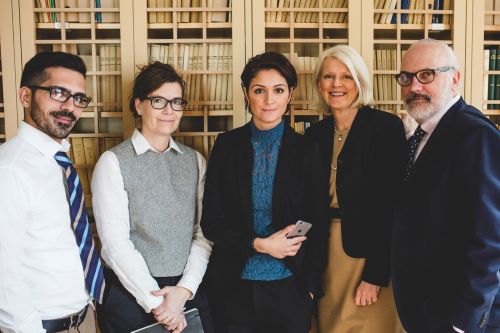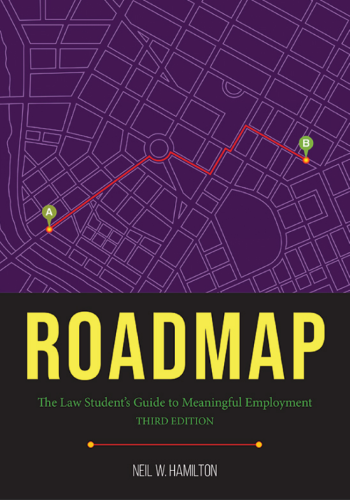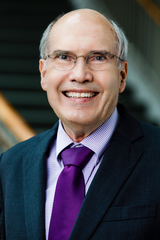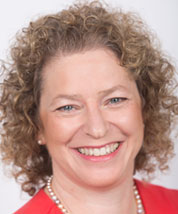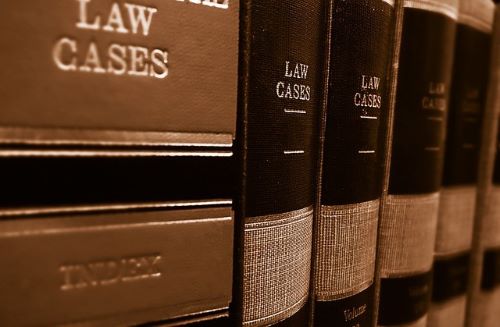By: David A. Grenardo, Professor of Law and Associate Director of the Holloran Center for Ethical Leadership in the Professions, University of St. Thomas School of Law
The Holloran Center for Ethical Leadership in the Professions at the University of St. Thomas School of Law (Minnesota) strives to share as many resources with others as possible. In an effort to make resources even more accessible, the Holloran Center has revamped its website to deliver those resources in a user-friendly manner.
The home page of the Holloran Center website begins with links (on the right side of the page) to (1) short, useful definitions of professional identity and professional identity formation, (2) three articles that explain the ABA’s changes to its standards 303(b) and (c), and (3) two groundbreaking articles on law students’ well-being.
As you scroll down the home page, four major links can be found under the heading “How to Get Started”: (1) Get to Know the Holloran Center, (2) Review Changes to Standard 303, (3) Explore our Tools and Resources, and (4) See Our Research and Training. Each of these four major categories is discussed below.
The first major link, Get to Know the Holloran Center, takes the user to a page that features the leadership team of the Holloran Center, including its Co-Directors Neil Hamilton and Jerry Organ, along with me, and the Holloran Center Fellows, Barbara Glesner Fines, Kendall Kerew, and Lou Bilionis. It also includes links to pages about Tom Holloran, who is the inspiration and namesake of the Center, along with a Donors and Partners page.
The second major link, Review Changes to Standard 303, leads to a page that includes (1) a list of existing entry ramps for schools to incorporate professional identity formation and (2) a link to an open access book – Law Student Professional Development and Formation: Bridging Law School, Student, and Employer Goals – that provides a straightforward and detailed look at the changes to 303(b) and (c) and suggestions regarding how to comply with those standards, and (3) the introductory materials mentioned above (short definitions of PI and PIF and three short articles about the changes to the ABA standards).
The third major link – Explore our Tools and Resources – brings up three more links on that topic: Learning Outcomes Database; Holloran Competency Milestones; and Professional Development Database.
The Learning Outcomes Database contains a searchable list of all law school learning outcomes that were available on law school websites as of January 2022. The Holloran Center identified those law schools with “basic” learning outcomes – those that recite the language of Standard 302 and nothing more. The Holloran Center also identified those law schools with more robust learning outcomes than required by the language of Standard 302.
The Holloran Competency Milestones are rubrics that describe the various stages of development associated with learning outcomes. In other words, they provide a tool to assess whether (and to what extent) law students are reaching learning outcomes in a variety of areas, including the following:
The Professional Development Database list includes 62 first-year, required, law school professional development initiatives based on information from law school websites as of November 2019. This list, as well as the Learning Outcomes Database, are currently being updated by research assistants for the Holloran Center. The updates should be available by September 1, 2023.
The fourth major link, See Our Research and Training, consists of three links itself. The first is the Roadmap for Employment, which is the award-winning book that provides a template for law students to use throughout all three years of law school to be fully prepared to find meaningful employment upon graduation. ABA Books will publish the substantially revised third edition of Roadmap on August 1st of this year; the latest edition is streamlined and even more law-student friendly at 51 pages total.
The second link under Research and Training, Coach Training, offers coaching tips and a guide to perform one-on-one coaching with law students, which is the most effective method to foster each student’s professional growth. The third link contains extensive Research on Professional Formation in multiple areas, such as professional formation overview, the importance of professional formation, promoting student self-direction, fostering a fiduciary mindset, assessing student professional development, legal education observations, and law student well-being and satisfaction.
As you scroll down the home page, there is a link to the Holloran Center Professional Identity Implementation Blog, which features useful and creative articles by contributors from law schools across the entire country.
Scrolling down further on the home page one will find several of the four major links described above.
We are thankful for the excellent work of Carrie Hilger at the University of St. Thomas School of Law and the University of St. Thomas IT Department in revising the Holloran Center website. We are particularly grateful to Skylar Peyton, a rising 3L at the University of St. Thomas School of Law, whose attention to detail, work ethic, and dedication helped to vastly improve the website.
The Holloran Center hopes that its website continues to serve as a valuable hub for free and accessible professional identity resources that can benefit law schools across the nation.
Should you have any questions or needs, please feel free to contact us.
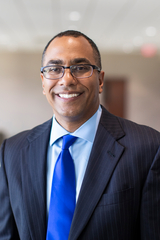
David Grenardo is a Professor of Law and Associate Director of the Holloran Center for Ethical Leadership in the Professions at the University of St. Thomas School of Law.



